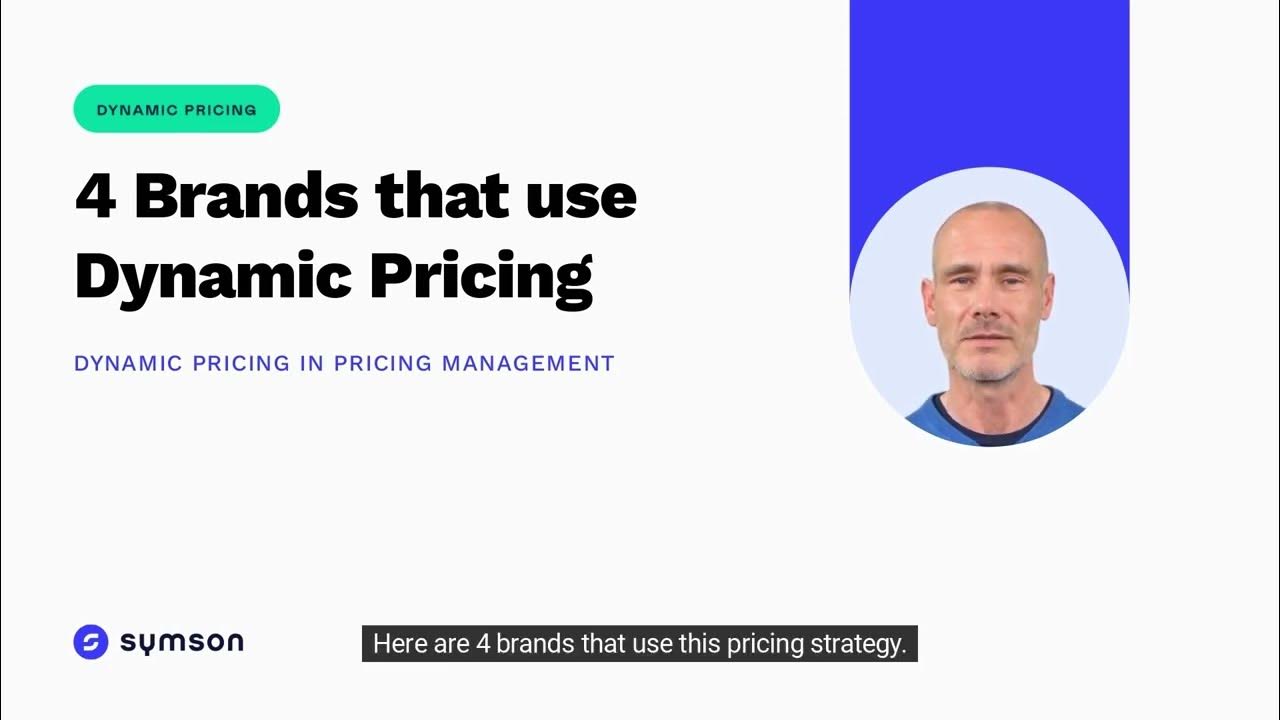Dynamic Pricing Strategy to effectively fill slots | Ecommerce | Travel | Hospitality Domains
Summary
TLDRIn this video from Data Track, the host explores dynamic pricing strategies across various sectors, notably travel. Using a personal anecdote about high flight prices despite available seats, they highlight the need for adaptive pricing based on demand and supply. The video outlines a forecasting model that factors in pricing, timing, and booking trends to optimize revenue while minimizing wastage. Results from the proposed model show significant improvements in both revenue and seat utilization, emphasizing the benefits for providers and consumers alike. The discussion underscores the importance of dynamic pricing in enhancing market efficiency.
Takeaways
- 😀 Dynamic pricing strategies can be applied in various domains like e-commerce, hospitality, and travel to adjust prices based on changing demand and supply.
- 📉 An example from the travel industry highlighted how a personal experience with a flight demonstrated non-optimal pricing, with prices increasing despite unfilled seats.
- 🔍 A forecasting system is essential to adjust prices dynamically based on factors such as days left until travel, seasonal trends, and weekdays versus weekends.
- 🧮 The proposed optimization layer aims to identify a set of prices that maximize revenue while minimizing wasted slots, benefiting both providers and consumers.
- 📊 Data for 50 different journeys was simulated, demonstrating how pricing impacts seat bookings, with an emphasis on the relationship between price, time left before travel, and booking trends.
- 💻 A regression model was trained using price and days left as predictors to forecast fillable slots, achieving a mean absolute error of 1.19, indicating good predictive capability.
- 🚀 The optimization process involved a random search algorithm to identify feasible price points that maximize revenue while adhering to constraints like wastage limits.
- 💰 Results showed significant revenue gains, with one journey's revenue increasing by over 41% due to dynamic pricing adjustments.
- 📈 Slot utilization improved drastically, with one journey seeing a 146% increase in filled slots, demonstrating the effectiveness of the dynamic pricing model.
- 📢 The video encourages viewers to stay tuned for more updates on data science and machine learning topics, emphasizing the ongoing relevance of dynamic pricing strategies.
Q & A
What is the main topic of the video?
-The video discusses dynamic pricing strategies that adjust prices based on changing demand and supply, focusing particularly on their application in the travel industry.
How does dynamic pricing benefit the travel industry?
-Dynamic pricing helps optimize seat occupancy and maximize revenue by adjusting prices based on factors such as remaining days before the journey and current demand.
What personal experience does the presenter share to illustrate the issue of pricing?
-The presenter shares an experience of traveling with an airline where prices continued to increase despite many vacant seats, demonstrating a non-optimal pricing strategy.
What factors are considered in the proposed forecasting system?
-The proposed forecasting system considers factors like current price, day of the week, days left before the journey, and past booking trends to adjust prices dynamically.
What parameters were simulated for the data generation in the example?
-Key parameters included total slots (250 seats), a journey timeframe of 30 days, and an initial wastage rate of 15-20%, aimed to be reduced to 2% after price corrections.
What modeling technique was used to predict fillable slots?
-A regression model was trained using price and days left before the journey as predictors for estimating fillable slots.
How does the optimization process ensure feasible price points?
-The optimization process checks that price points do not lead to excess supply or excessive wastage, maintaining a balance between revenue generation and available slots.
What were the results of implementing dynamic pricing in the case study?
-The implementation led to a revenue increase of 41.27% and an increase in filled slots from 32 to 79, demonstrating the effectiveness of the dynamic pricing strategy.
How does dynamic pricing impact consumers?
-Dynamic pricing can lead to more affordable ticket prices for consumers while simultaneously optimizing revenue for providers, resulting in better overall service availability.
Where can viewers find more detailed information about the data and modeling used in the video?
-Viewers can access the detailed methodology and results through a Kaggle notebook link provided in the description section of the video.
Outlines

Этот раздел доступен только подписчикам платных тарифов. Пожалуйста, перейдите на платный тариф для доступа.
Перейти на платный тарифMindmap

Этот раздел доступен только подписчикам платных тарифов. Пожалуйста, перейдите на платный тариф для доступа.
Перейти на платный тарифKeywords

Этот раздел доступен только подписчикам платных тарифов. Пожалуйста, перейдите на платный тариф для доступа.
Перейти на платный тарифHighlights

Этот раздел доступен только подписчикам платных тарифов. Пожалуйста, перейдите на платный тариф для доступа.
Перейти на платный тарифTranscripts

Этот раздел доступен только подписчикам платных тарифов. Пожалуйста, перейдите на платный тариф для доступа.
Перейти на платный тарифПосмотреть больше похожих видео

Penetapan Harga Produk Berbasis Digital by Melya Yosita (E Marketing)

Examples of Dynamic Pricing: SYMSON's Knowledge Snippets

Lesson 1.2 Yield Management in the Hospitality Industry

BIG DATA Pros and Cons

Boosting Retail Margins: Price Optimization Strategies with Machine Learning

BMW Teilelager in Bangkok unterschätzt? - Hier gibt es alles! + Von Hunden attackiert!
5.0 / 5 (0 votes)
